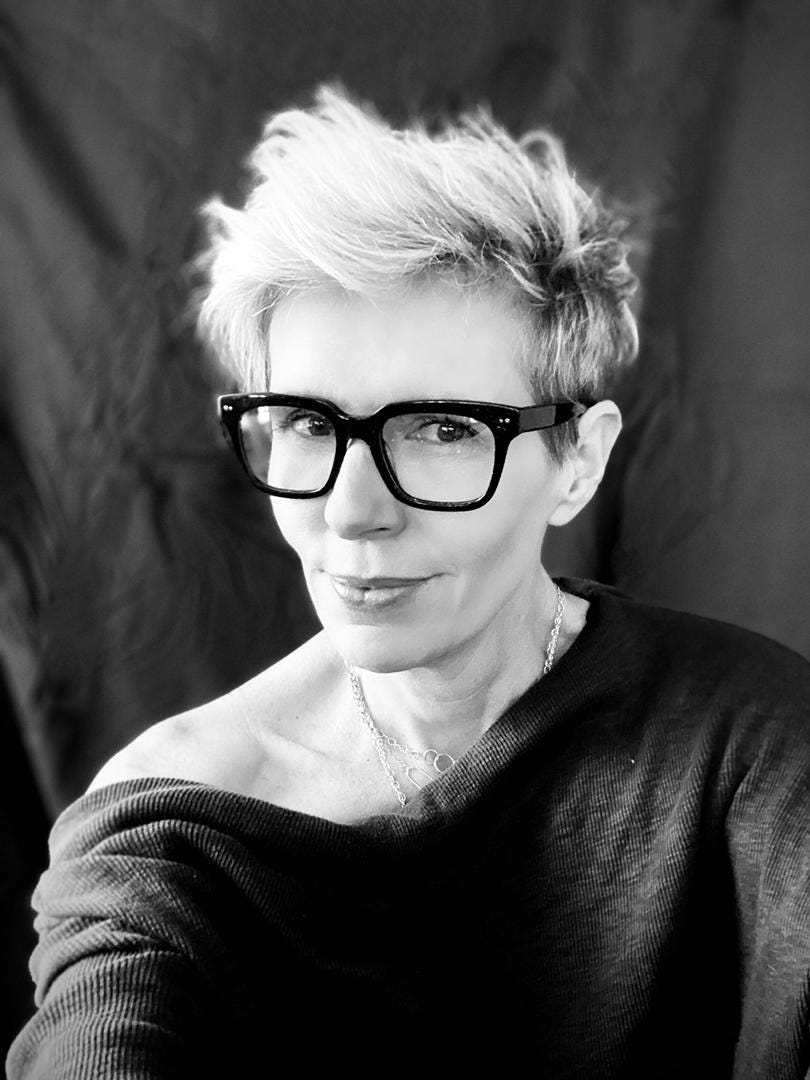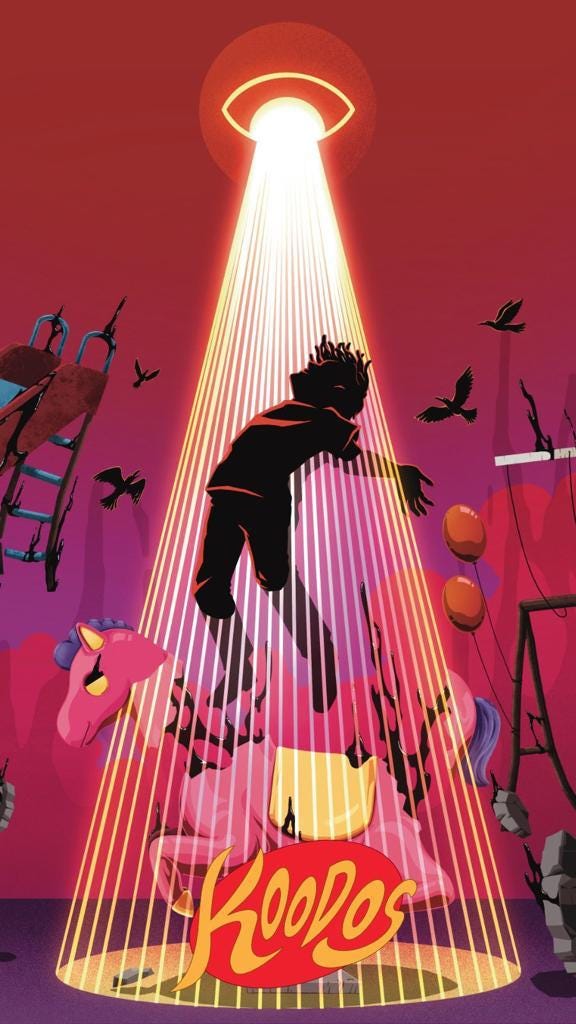Trish evolved from creating physical portrait photography to helping NFT creators monetise their work on the blockchain. For someone who started following her passion in art at the age of 30, Trish believes it's never too late to start something new, especially when it’s something you love.
Trish tells Faces of Web3’s Esther Eze the story about her growth and how she’s been able to help other artists succeed in the Web3 space.
Traveling around the world through Web3
I’m a Gen X who once had no sense of things getting better for herself. I lived through many tragedies, and I once felt really hopeless.
Before I joined the NFT community, I was a self-taught photographer [in America] who specialized in family portraits. None of my work was really “mintable” because they were always commissioned private family photographs.
I first came into Clubhouse to sit out the pandemic and fell into an NFT room where people talked about NFTs and Web3. The promise of Web3 for communities all over the world really moved me. It had the power to change the world as we know it and give people access to wealth, regardless of their background.
When I heard about Web3 and its possibilities, I badly wanted to be a part of it more than I wanted to mint my own art.
I used to joke all the time that I’d slept with everybody on Clubhouse because we'd often fall asleep in rooms. That’s how much time we spent there. There were so many smart people in the space, and I absorbed as many conversations as I could.
I looked forward to meeting people, and the space let me out in more ways than I can describe. There was something new every day.
In a way, Clubhouse allowed me to travel. I think traveling is very important for people [especially artists], and everybody should have the opportunity to travel. Your world really shifts in a profound way.
At the time, I thought deeply about art and what this space meant for artists and the future. The future could look different with a significant distribution of wealth put in the hands of artists. That meant financial freedom and security for their families.
So, I had a room with SuperRare artist Art Jedi called The Collab Club. We talked to people about NFTs, and the room would get really full. I liked hearing people’s stories. We were sitting in rooms with people from Africa, Ireland, Shanghai, and all over the world. It was a beautiful thing, connecting this way.
Growing up
I had a hard childhood, so I don’t like to talk about it too much. I grew up with a mother who had schizophrenia and an emotionally abusive dad. I was the oldest of three kids, and I was put in the position of mothering them at a really young age.
Though my childhood was difficult, I don’t dwell on it because a lot of other people have gone through harder things. My childhood also probably helped with my empathy because I know how hard things can be even though you look different on the outside.
I put myself through college. But even though art and photography were things I was passionate about, I didn't study them in school. I’d been conditioned to believe that art school was a waste of time and money. So, I ended up teaching myself those things I loved.
I attended the University of California Irvine. I got good grades, and I really enjoyed my time at school. I attended a lot of EdX and open education classrooms where I listened to the lectures all the time but didn’t do my homework on those. I definitely did my work in college, but the deadlines and my struggle with ADHD made it challenging. I struggled.
ADHD is difficult, and trauma had something to do with it. I’m severely ADHD neurodivergent. I probably have some other learning disabilities, like dyslexia, that were never diagnosed.
I’m smart, but I have a hard time processing. I get distracted easily, so I have to read things five times over. I learn better by hearing, so I listen to audio, and I absorb information much better that way.
I often wonder how many diagnosable conditions are really gifts in disguise. I have two nephews with autism, and they are super brilliant. The world needs that kind of thinking, but get help when you need it.
Finding the way back to art
I was always pretty good at photography. I'd been taking pictures since I was a little kid. I got my first camera when I was in third grade. But I never thought about it as a career path until after my daughter was born. She’s 20 now.
At the time, people started asking me to take pictures of them. I had to start charging money to keep up with all the requests.
Finding my way back to what I loved was incredibly freeing and validating for me. It felt like I was finally living an authentic existence. I don’t know how I got here, but I’m glad I found a niche that I didn’t even know existed.
I think that my partnership with Art Jedi was brilliant. We worked well together in the [Clubhouse] room. I think people trusted us too.
From getting support to supporting artists
If I had all the crypto in the world, I’d be sitting in the rooms and connecting artists all the time. I’d be collecting art and pushing emerging artists and technologists forward.
I don’t really enjoy marketing my own business. You’d rarely find me talking about my work when I mint a couple of pieces, but I really love selling art for young artists.
My biggest strength is learning about a project, putting that into a really good story and being able to communicate that story. It’s why I can't sell anything I don't believe in. I get asked to [speak in] rooms a lot, but I can't sell projects I don't believe in to people.
When I believe in someone and their project, it’s very easy for me to take all the good parts and build it. I really like to work in communities and with artists who I would like to see running the world after I'm gone.
I couldn't be an artist, and I didn't start my art until I was almost 30. I wish I had that [support]. So, I try to be that person for the artists I work with. I know their brains. I know that a lot of them hate to sell their art. I know that a lot of times, artists feel like the art should speak for itself, which is especially difficult in an environment where audio is so important.
I want to be with good people who are working their way up, who care about others and the collectors investing in them. I definitely don’t want to be associated with anything that would be seen as a rug pull. I also like projects that have a deeper meaning or an innovative idea. I don’t want my name associated with anything I don't believe in.
I’ve been on bigger teams marketing a project and learned a lot by marketing those projects. You need to have a really good team of dedicated people who’ll work on the project long-term. I want to work with ethical people who believe in decentralization. People who collaborate and don’t compete.
I’m currently working on the KoodosXYZ project with rapper @BlackDave and musician MuseByMonday. They're two people I’ve known for a while—Black Dave since my first day. They've been building a community through the time I’ve known them, and I'm proud to be a part of such an innovative project.
Koodos is an album that allows the collectors to claim an AR physical experience. And it’s an entry point into their world.
I hope that one thing people take away from my story is that it’s never too late to pivot into something new if the mood strikes you. Financial winters are a real thing for everyone. Be prepared for the dips.
Five things Trish wants you to know:
Pineapple doesn't belong on pizza.
For fun, she plays with her cat.
Talking to her artists is one of her favourite things to do.
She loves museums and large scale art installations.
She's currently listening to KoodosXYZ by MuseByMonday.
You can follow Trish on Twitter and take a look at her NFT projects.


